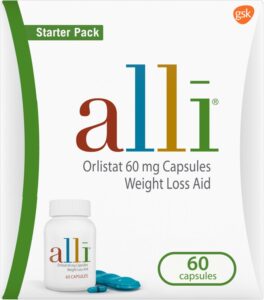Content marketing strategy includes six important steps.
- Plot
- Idea Generation
- Production and Promotion
- Audience Acquisition
- Conversion & Nurture
- Measure & Optimize
1. Plot
The purpose of Content Marketing is to generate content that attracts prospects and engage them to move across the buying cycle and convert them into customers. To achieve this objective one must carefully lay a plot to define buyer persona and buying stage. First and foremost thing to do is to decide where your topic falls and your business goals. One must do some research to find out the topic positioning and the type of content to be produced. Heedful consideration of customers’ interests and your unique selling proposition will guide you to come up with appropriate content. The sweet spot in marketing is where customer’s interests intersect with the uniqueness of your products/services. Figuring out sweet spot will simplify content creation. Content which is in sweet spot actively engages customers and prospects, absorbed by them and shared by them with greater speed than in any other spot. Next thing to consider is your audience. A matrix that aligns buyer personas with buying stages simplifies content marketing approach. Map out content with an objective of attracting prospects and moving them onto the next stage of the buying process. The following questionnaire helps to prepare valuable content at each stage:
- What are the persona’s pain points at a specified stage of the buying process?
- How can their concerns be addressed at that stage?
- What information should be provided to address their concerns?
- What titles best captures their attention?
Content can be created accordingly once the framework is finalized. The important thing is to keep the process going continuously because content marketing is a cycle.
2. Idea Generation
Next step followed by plotting the framework is idea generation to create quality content. Idea generation to write content that interests customers or prospects is a big hurdle to pass in a content marketing strategy. It is the biggest thing a content marketer struggles with. The best way to start is to look up to your customer or client.
Listen Closely
Listen carefully to the voices of people in your organization. Involve people who are in direct contact with customers and conversing with them on a daily basis. Create a channel where these employees share their ideas and choose relevant topics to produce content that addresses customers’ concerns.
Social Platforms
Customers talk about social media every day. Keep an eye on target areas on Facebook, LinkedIn, Twitter etc. where your specified demographics participate, share their opinions and discuss their pain points. Websites like LinkedIn Answers and Quora are good places where your prospects talk their minds out.
Customer Interviews
Taking interviews with potential buyers about their issues directly leads a content marketer where to focus. Interviews should be unbiased and should not be done in a sales context. The ideal way to do this process is anonymous surveys or in-person interviews where the customers are not revealed with your brand name. The objective of the interview should be to learn about the challenges, and this will help to shape your content better. Content should always be about “customer” not “you” (products or services). The customer’s pain points are the driving forces behind their interest in your products. The content you provide should spark the buying process. Your genuine interest in addressing their concerns and catering to their needs will earn their trust.
3. Production & Promotion
According to Jake Sorofman, the Digital Analyst at Garner, “The best content marketers should think like manufacturers.” Once the idea generation yields the list of topics to produce content about, it is time to create content, organize it to promote through different channels. The team involves many crucial roles such as the idea generator, the content creator, graphic designer, the Managing Editor, the SEO expert, the Social media team, Legal & PR, marketing executives etc. The roles of these members of the team should be defined for the process to be smooth. A content calendar comes in handy at this point of content marketing strategy. The marketing team can use the content calendar as a shareable resource to plan all the activities of content creation and promotion. Planning your digital content publishing ahead of time helps you to produce a consistent flow of content which builds credibility towards your brand. Availability of an up-to-date content calendar to all the members of the team helps for better coordination amongst the team, and everyone works according to the same plan and schedule. The inclusion of additional information such as persona and buying stage will give extra coverage. A single idea can produce content in different forms such as a blog, ebook, video, an infographic etc. The content calendar helps to organize and produce these different content forms out of the single concept and publish them. The most important aspect of this stage is how to promote your content. Choose a right channel to promote different forms of content. Your blog should be the first place to publish your content. But content in the form of video, ebook or infographic can also be published through appropriate sites such as YouTube, Slideshare, Pinterest etc. Social network sites such as Facebook, Instagram, Google Plus, and LinkedIn etc. can be used to place short posts which link back to your content. Your content should always be available to the members of your team who directly interact with customers so that they can directly distribute it to them.
4. Audience Acquisition
Content marketing is all about audience, it begins and ends with the audience. It is important to have insights about how a potential customer receiving your content and how it affects him with decision making to purchase. Audience development can be done in the following ways:
a) Influencers
Influencers play a crucial role in audience development. Identify influencers in your business area and fabric a path for mutual familiarity. Followers of this influencer on their social media accounts are your potential prospects or customers. Create content that a particular influencer would be interested in sharing with his/her audience. You can also request for feedback or quote from the influencers about your content, which earns the followers’ attention. Gaining links from influencers will improve your rank on search engine results pages (SERPs).
b) Search
To gain an audience from search, you have to monitor your content. Identify the keywords that your prospects or customers are using for search queries. Target and optimize your content using appropriate keywords. Monitor the performance of keywords you selected and how they are affecting the search rank and search traffic.
c) Paid
Paid traffic comes from search engine marketing (SEM), Facebook ads, sponsored Tweets or paid email newsletter distribution. A strategic content marketer would drive this traffic to content pages rather than product pages. The idea is to build a relationship with a prospect by sharing valuable content, which turns him into a loyal customer.
d) Syndication
Content syndication is the process of publishing or sharing your content with third-party sites. Syndicating your content will distribute it on a wider range and build a bigger audience. It develops a relationship between your prospects and your brand even before they visit your site and know about you. So, make sure to leave links back to your site.
5. Conversion & Nurturing
Your business is defined by who you serve. Final steps of content marketing strategy are converting site visitors to leads and nurture leads into customers. Some visitors will become customers right away when they click on your products. Some visitors spend some time navigating and leave the site without any profitable action. The objective of content marketing strategy at this point is to convince these visitors and bring them back. The best way to do this is by prominently displaying informative content which engages these visitors and convinces them to come that their time was well spent on your site. Lead nurturing is the process of developing a relationship with a prospect at every stage of sales funnel and through every step of buyer’s journey with valuable content. Lead nurturing focuses on listening to the needs of prospects and providing the content to answer their concerns. Consistently optimizing your site for these returning visitors will result in a conversion. Some experimenting with location and messages and A/B testing provide helpful insights where to tweak the process to nurture your leads. Offer short-form content link blog posts for free and ask for contact information if the visitor wants access to other valuable resources such as ebooks or guides. A prospect becomes a lead when they share the contact details and falls into a known entity. These leads should be nurtured by providing opportunities to become customers. Lead scoring is the ranking of prospects against a scale based on their value to the business. The lead score is used to determine the order of priority to engage leads. It allows a business to understand a prospect’s experience based on their buying stage and their interest levels to make a purchase. The worthiness of a lead can be determined when they provide their details, but the readiness of the lead to make a purchase solely depends on your marketing efforts. Now that the leads are interested in receiving information from you, the content that is delivered to their inbox should be much more precise, in accordance with their interests and their needs. Content should be tailored according to each persona at each stage of the buying process. It is time to configure your marketing automation system to create campaigns which will deliver content at consistent time periods that corresponds to your content matrix. A lead’s score increase when they are intent to make a purchase. As the score rises, your campaigns should transit from educational content to buyer’s guide and finally to testimonials, which matches lead’s buying journey. The best practice is to differentiate leads based on their response to your outreach and their readiness to buy your product. Marketing automation is sophisticated in a way to better differentiate leads and personalize content for them based on the buying stage. Delivering right content at the right time to each lead will inspire them to become a qualified purchaser.
6. Measure & Optimize
Since the campaigns are up and running in promoting your content, it is important to track and measure the results of these campaigns. Measuring the results identifies key performance indicators. Based on what is working and what is not, you can optimize your content and better align your strategy for maximum reach of audience. Pete Markey, brand communications and marketing director at Aviva, says – “Content marketing is as much about relevance as it is about reached, to create something genuinely helpful or with a purpose, which considers a person at a specific moment in their life”. According to a report by Acquia, content management firm, 45% of marketers measure repeat visits and transactions, 44% track brand awareness, 41% measure audience share, 38% measure customer satisfaction, 37% track unique visitors and 37% measure conversion rates. Here are few key points of what you can measure:
a) Most Effective Key Phrases
Identify which key phrases are most active and driving visits. This will give an idea about the audience’s persona or audience segment which is related to these keywords. Since it is clear now who you are writing for, so build content around these key phrases to keep them engaged and inspire them to move forward in the buying process.
b) High Bouncing Keywords
Identify high bouncing keywords and survey the visitors for feedback by placing calls-to-action directly on the bouncing page. Based on the feedback provided you can tailor the content to suit the visitor’s requirements better.
c) Most Effective Social Networks
Measure the traffic volumes from different domains and bounce & click-through-rates. Improve the content where the bounce rates are high.
d) Referring Sites
Measure the link volume that your site receives from other websites. Develop more content based on the traffic from referring sites.
e) Effect of Content on Leads
Measure the value of your content to a user during buying cycle and if it is influencing a lead to become a customer.
f) A Rise in Engaging Users
Measure if visitors are navigating to more than one page during a session. If they do, it indicates that your content is engaging. Improve the engagement by enhancing your site’s design and creating multiple routes to engage the pages of your site.
g) Feedback from Customers
Customer feedback is the ultimate measure of their satisfaction. Provide feedback forms and ask for their ratings and suggestions. Find out if the visitors found what they are looking for and how satisfied they are. The purpose of optimization is to monitor and test continuously. Analytics and customer feedback data provides best insights into the performance of your site and opportunities to improve.




